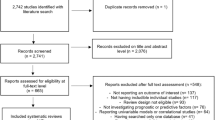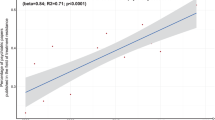Abstract
Mental disorders cause more disability than any other class of medical illness in Americans between ages 15 and 44 years. The suicide rate is higher than the annual mortality from homicide, AIDS, and most forms of cancer. In contrast to nearly all communicable and most non-communicable diseases, there is little evidence that the morbidity and mortality from mental disorders have changed in the past several decades. Mental health advocates, including psychiatric researchers, have pointed to stigma as one of the reasons for the lack of progress with mental illnesses relative to other medical illnesses. This review considers how the expectations and goals of the research community have contributed to this relative lack of progress. In contrast to researchers in cancer and heart disease who have sought cures and preventions, biological psychiatrists in both academia and industry have set their sights on incremental and marketable advances, such as drugs with fewer adverse effects. This essay argues for approaches that can lead to cures and strategies for prevention of schizophrenia and mood disorders.
This is a preview of subscription content, access via your institution
Access options
Subscribe to this journal
Receive 12 print issues and online access
$259.00 per year
only $21.58 per issue
Buy this article
- Purchase on Springer Link
- Instant access to full article PDF
Prices may be subject to local taxes which are calculated during checkout


Similar content being viewed by others
References
Kennedy M . A Brief History of Disease, Science and Medicine, The Writers Collective, Cranston, Rhode Island, 2004.
Zerhouni E . Translational and clinical science–time for a new vision. N Engl J Med 2005; 353: 1621–1623.
Kessler RC, Chiu W, Demler O, Walters E . Prevalence, severity, and comorbidity of 12-month DSM-IV disorders in the national comorbidity survey replication (NCS-R). Arch Gen Psychiatr 2005; 62: 617–627.
Lauriello J, Bustillo JR, Keith SJ . Schizophrenia: scope of the problem. In: Sadock BJ, Sadock VA (eds). Comprehensive Textbook of Psychiatry, 8th edn. Lippincott Williams & Wilkins: Philadelphia, 2004, pp 1345–1353.
Yeargin-Allsopp M, Rice C, Karapurkar T, Doernberg N, Boyle C, Murphy C . Prevalence of autism in a US metropolitan area. JAMA 2003; 289: 49–55.
WHO Report. 2002; http://www.who.int/healthinfo/bodestimates/en/.
Goldsmith SK, Pellmar TC, Kleinman AM, Bunney WE (eds). Reducing Suicide: A National Imperative. Board on Neuroscience and Behavioral Health, Institute of Medicine Publisher: Washington, DC, 2002.
Heila H, Haukka J, Suvisaari J, Lonnqvist J . Mortality among patients with schizophrenia and reduced psychiatric hospital care. Psychol Med 2005; 35: 725–732.
Keel PK, Dorer DJ, Eddy KT, Franko D, Charatan DL, Herzog DB . Predictors of mortality in eating disorders. Arch Gen Psychiatr 2003; 60: 179–183.
Kessler R, Berglund P, Demler O, Jin R, Koretz D, Merikangas K et al. The epidemiology of major depressive disorder. JAMA 2003; 289: 3095–3105.
Lehman AF, Steinwachs DM . Patterns of usual care for schizophrenia: initial results from the Schizophrenia Patient Outcomes Research Team (PORT) client survey. Schizophr Bull 1998; 24: 11–20.
McFarlane WR, Dixon L, Lukens E, Lucksted A . Family psychoeducation and schizophrenia: a review of the literature. J Marital Fam Ther 2003; 29: 223–245.
Resnick SG, Rosenheck HA, Dixon L, Lehman AF . Correlates of family contact with the mental health system: allocation of a scare resource. Ment Health Serv Res 2005; 2: 113–121.
The President's New Freedom Commission on Mental Health. Achieving the Promise: transforming mental health care in America, Final Report, July 2003.
Frank E, Prien RF, Jarrett RB, Keller MB, Kupfer DJ, Lavori PW et al. Conceptualization and rationale for consensus definitions of terms in major depressive disorder. Remission, recovery, relapse, and recurrence. Arch of Gen Psychiatr 1991; 48: 851–885.
Nierenberg AA, Wright EC . Evolution of remission as the new standard in the treatment of depression. J Clin Psychiatr 1999; 60 (Suppl 22): 7–11.
Andreasen NC, Carpenter WT, Kane JM, Lasser RA, Marder SR, Weinberger DR . Remission in schizophrenia: proposed criteria and rationale for consensus. Am J Psychiatr 2005; 162: 441–449.
Resnick S, Rosenbeck R, Lehman A . An exploratory analysis of correlates of recovery. Psychiatr Serv 2004; 55: 540–547.
Hyman S, Fenton W . Medicine. What are the right targets for psychopharmacology? Science 2003; 299: 350–351.
Lieberman JA, Stroup TS, McEvoy JP, Swartz MS, Rosenheck RA, Perkins DO et al. Effectiveness of antipsychotic drugs in patients with chronic schizophrenia. N Engl J Med 2005; 353: 1209–1223.
Robinson DG, Woerner MG, McMeniman M, Mendelowitz A, Bilder RM . Symptomatic and functional recovery from a first episode of schizophrenia. Am J Psychol 2004; 161: 473–479.
Tamminga C, Nemeroff C, Blakely R, Brady L, Carter C, Davis K et al. Developing novel treatments for mood disorders: accelerating discovery. Biol Psychiatr 2002; 52: 589–609.
Trivedi M, Rush J, Wisniewski S, Nierenberg A, Warden D, Ritz L et al. Outcomes with citalopram for depression using measurement-based care in STAR*D: implications for clinical research and practice. Am J Psychiatr, in press.
Zipursky RB, Christensen BK, Daskalakis Z, Epstein I, Roy P, Furimsky I et al. Treatment response to olanzapine and haloperidol and its association with dopamine D receptor occupancy in first-episode psychosis. Can J Psychiatr 2005; 50: 462–469.
Caspi A, Sugden K, Moffitt TE, Taylor A, Craig IW, Harrington H. et al. Influence of life stress on depression: moderation by a polymorphism in the 5-HTT gene. Science 2003; 301: 386–389.
Kendler KS, Kuhn JW, Vittum J, Prescott CA, Riley B . The interaction of stressful life events and a serotonin transporter polymorphism in the prediction of episodes of major depression: a replication. Arch Gen Psychiatr 2005; 62: 529–535.
Pezawas L, Meyer-Lindenberg A, Drabant EM, Verchinski BA, Munoz KE, Kolachana BS et al. 5-HTTLPR polymorphism impacts human cingulate-amygdala interactions: a genetic susceptibility mechanism for depression. Nat Neurosci 2005; 6: 828–834.
The International HapMap Consortium. A haplotype map of the human genome. Nature 2005; 436: 1299–1320.
Edwards AO, Ritter R, Abel K, Manning A, Panhuysen C, Farrer L . Complement factor H polymorphism and age-related macular degeneration. Science 2005; 308: 421–424.
Austin C, Brady L, Insel T, Collins F . Molecular biology: NIH molecular libraries initiative. Science 2004; 306: 1138–1139.
Billings LM, Oddo S, Green KN, McGaugh JL, Laferla FM . Intraneuronal Abeta causes the onset of early Alzheimer's disease-related cognitive deficits in transgenic mice. Neuron 2005; 45: 675–688.
Zarnescu DC, Shan G, Warren ST, Jin P . Come fly with us: toward understanding fragile X syndrome. Genes Brain Beh 2005; 6: 385–392.
Neul J, Zoghbi H . Rett syndrome: a prototypical neurodevelopmental disorder. Neuroscientist 2004; 10: 118–128.
Druker BJ . Imatinib as a paradigm of targeted therapies. Adv Cancer Res 2004; 91: 1–30.
Olds D, Henderson C, Cole R, Eckenrode J, Kitzman H, Luckey D et al. Long-term effects of nurse home visitation on children's criminal and antisocial behavior. JAMA 1998; 280: 1238–1244.
Owens C, Miller P, Lawrie S, Johnstone E . Pathogenesis of schizophrenia: a psychopathological perspective. Br J Psychiatr 2005; 186: 386–393.
Yung AR, Phillips LJ, Yuen HP, Francey SM, McFarlane SM, Hallgren M et al. Psychosis prediction: 12-month follow up of a high risk (‘prodromal’) group. Schizophr Res 2003; 60: 21–32.
Segman RH, Gtoltser-Dubner T, Friedman N, Kaminski N, Shalev A . Peripheral blood mononuclear cell gene expression profiles identify emergent post-traumatic stress disorder among trauma survivors. Mol Psychiatr 2005; 10: 500–513.
Yehuda R, Bryant R, Marmar C, Zohar J . Pathological responses to terrorism. Neuropsychopharmacology 2005; 30: 1793–1805.
Foa EB, Cahill SP, Boscarino JA, Hobfoll SE, Lahad M, McNally RJ et al. Social, psychological, and psychiatric interventions following terrorist attacks: recommendations for practice and research. Neuropsychopharmacology 2005; 30: 1806–1817.
Nemeroff C, Bremner JD, Foa EB, Mayberg HS, North CS, Stein MB . Posttraumatic stress disorder: a state-of-the-science review. J Psychiatr Res 2005, in press.
Author information
Authors and Affiliations
Corresponding author
Rights and permissions
About this article
Cite this article
Insel, T., Scolnick, E. Cure therapeutics and strategic prevention: raising the bar for mental health research. Mol Psychiatry 11, 11–17 (2006). https://doi.org/10.1038/sj.mp.4001777
Published:
Issue Date:
DOI: https://doi.org/10.1038/sj.mp.4001777
Keywords
This article is cited by
-
Psychometric properties of the Spanish adaptation of the Mental Health Continuum—Short Form: A bifactor ESEM approach in an adolescent sample
Current Psychology (2024)
-
A paradigm shift in translational psychiatry through rodent neuroethology
Molecular Psychiatry (2023)
-
Legal recommendations and psychological advice sports administrators can implement in the next pandemic
The International Sports Law Journal (2023)
-
Psychometric evaluation of the mental health continuum-short form (MHC-SF) in a New Zealand context – a confirmatory factor analysis
Current Psychology (2023)
-
Transcranial Ultrasound Stimulation Reverses Behavior Changes and the Expression of Calcium-Binding Protein in a Rodent Model of Schizophrenia
Neurotherapeutics (2022)



